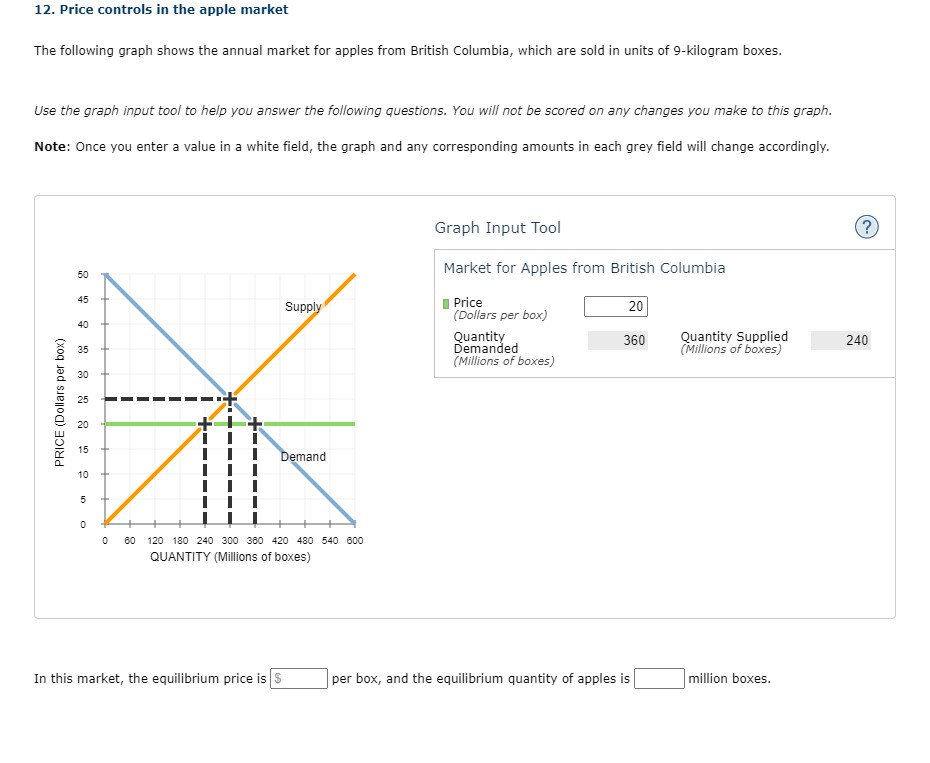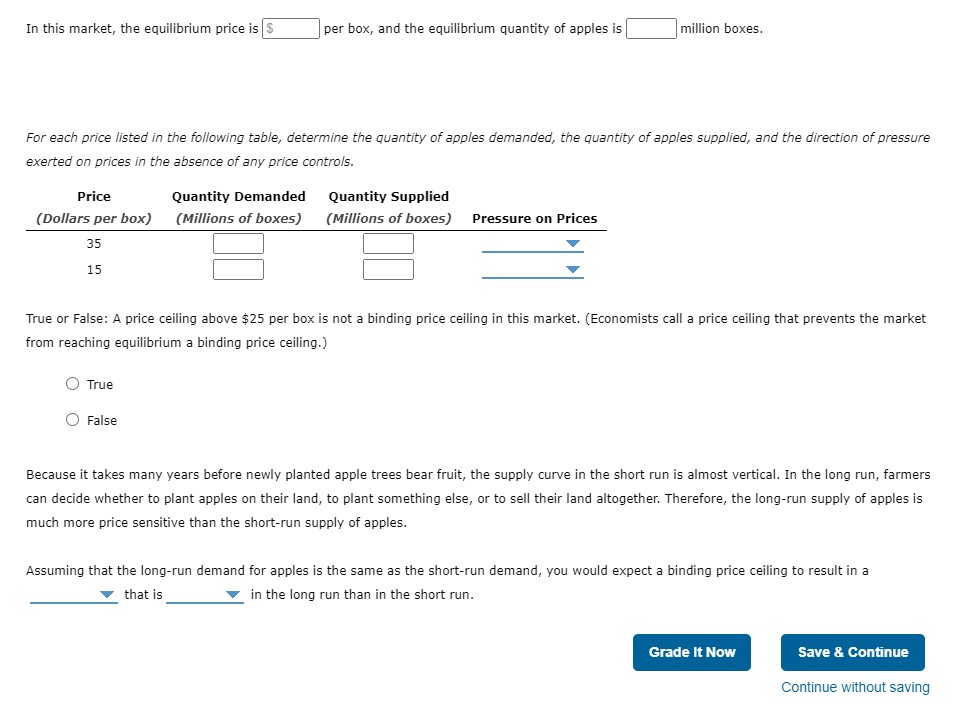Home /
Expert Answers /
Economics /
12-price-controls-in-the-apple-market-the-following-graph-shows-the-annual-market-for-apples-from-pa621
(Solved): 12. Price controls in the apple market The following graph shows the annual market for apples from ...


12. Price controls in the apple market The following graph shows the annual market for apples from British Columbia, which are sold in units of 9-kilogram boxes. Use the graph input tool to help you answer the following questions. You will not be scored on any changes you make to this graph. Note: Once you enter a value in a white field, the graph and any corresponding amounts in each grey field will change accordingly. Graph Input Tool Market for Apples from British Columbia Price (Dollars per box) Quantity Quantity Supplied Demanded (Millions of boxes) (Millions of boxes) In this market, the equilibrium price is per box, and the equilibrium quantity of apples is million boxes.
In this market, the equilibrium price is per box, and the equilibrium quantity of apples is million boxes. For each price listed in the following table, determine the quantity of apples demanded, the quantity of apples supplied, and the direction of pressure exerted on prices in the absence of any price controls. True or False: A price ceiling above per box is not a binding price ceiling in this market. (Economists call a price ceiling that prevents the market from reaching equilibrium a binding price ceiling.) True False Because it takes many years before newly planted apple trees bear fruit, the supply curve in the short run is almost vertical. In the long run, farmers can decide whether to plant apples on their land, to plant something else, or to sell their land altogether. Therefore, the long-run supply of apples is much more price sensitive than the short-run supply of apples. Assuming that the long-run demand for apples is the same as the short-run demand, you would expect a binding price ceiling to result in a that is in the long run than in the short run.